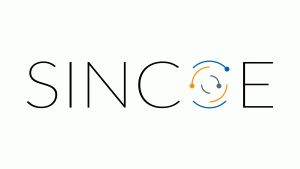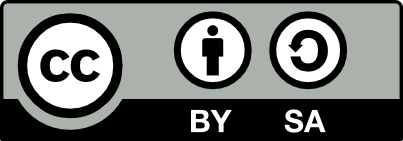Home » ResourceType » Case examples » Pilots extended description
Category Archives: Pilots extended description
Student’s perspective on the use of cameras in online teaching. Extended description
Thoughts of Turku University of Applied Sciences students on the use of cameras in online lessons As part of the SINCOE project (Supporting Innovation Competence in online education), which is part of the Practice-Based Pedagogy Research Group, a short survey was conducted in November 2024 for 1st and 2nd year students and open UAS multi-modal […]
Self-assessment of group work piloting the Cogknit tool. Extended description
Objectives: The objectives of this pilot were to explore the use of the Cogknit platform in the Strategic Sourcing course, which is an optional course for 2nd and 3rd-year Industrial Management and Engineering students. The participant group was diverse, consisting of exchange students, double degree students, and international degree students. Building on previous pilots, this […]
Role of online tools for communication in agile projects. Extended description
Objectives: The objective was to clarify how agile project working online and onsite affect students’ innovation skills especially in the area of teamwork. The students learn basics of project management with agile method (Scrum) by working in 3-6 students project teams. During the projects each team build web sites for fictive companies and used various […]
Development of Innovation and Entrepreneurial Management Competencies in First Year Physics Engineering Students at UPV. Extended description
The pilot was carried out in the first course of Physical Engineering at the School of Telecommunication Engineers of the Polytechnic University of Valencia. The subject is called Fundamentals of Business Organization. It is a group of 75 students who are in the first year of the degree. The experience began on February 14 and […]
Improving the validity of self-assessment through preparatory self-assessment training. Extended description
Objectives:Students get acquainted with the concept of innovation competence. Students train a more objective self-perception. They become aware that biases play a role in self-assessments and learn how to avoid or at least reduce them. Methods: Introduction of the Sincoe-Concept of innovation competence Sincoe@Assessment Tool in a face-to-face lecture or in a online synchronous TEAMS-lecture. Minigroups: […]
Social and Environmental Innovation Challenge. Extended description
Objectives: The aim of this Pilot was to raise students’ awareness of the level of development of their skills in innovation, creativity, critical thinking and teamwork. Methods: Challenge + SINCOE Survey To carry out this Pilot, a face-to-face project was carried out through a “challenge” that lasted 6 weeks (1 session per week). This project […]
Unveiling Synergies: Sincoe@ Self-Evaluation, Belbin Dynamics, and Cultivating Effective Team Interactions. Extended description
Objectives: This pilot focuses on this aspect of the SINCOE project: Methods: We will use a highly participatory workshop methodology that will allow you to develop knowledge, skills, and attitudes, but above all, to practice them frequently in the classroom so that you can receive feedback and develop actions to improve your competencies. Environment: In […]
Supply Chain Management course group work self-evaluation. Extended description
Objectives: In the pilot, the objective was to make the students aware and think about various innovation competencies that are useful both in studies and in working life. By going through the given statements and thinking about how the innovation-promoting abilities described in the statements have come to the fore in their group work for […]
Strategic Sourcing course ‘procurement year clock’ group work self-evaluation. Extended description
Objectives: In the pilot, the objective was to make the students aware and think about various innovation competencies that are useful both in studies and in working life. By going through the given statements and thinking about how the innovation-promoting abilities described in the statements have come to the fore in their group work for […]
Innovation competences as a guideline for course design – teacher´s innovation competences. Extended description
When teachers define the learning objectives for the upcoming course and for the course participants, it is assumed, most likely quite correctly, that the teachers already have obtained those skills themselves that they are teaching. Teachers do master the subject matter, but in my pilot, I wanted to check, how can I in my course […]
Influence of the Sincoe Training on Self-Assessment. Extended description
Goal: Examination of the influence of the Sincoe training videos for self-assessment of innovation competence combined with the regular content of the course (including learning units on the topics of perception and personality traits) on self-assessment with the Sincoe assessment tool. Target group: 1st Semester Life Sciences students. More than 60 participants. Age: 18 to […]
Unveiling Synergies: Sincoe@ Self-Evaluation. Extended description
Objectives: This pilot focuses on this aspect of the SINCOE project: Methods: This survey was planned as an “injection”, in a course that is dominated by lectures with some short excercises. It was “injected” with a in the 6th week of 13 weeks, after introducing into the topic of the relationship between marketing and new […]
Find out things that affect student’s motivation. Extended description
Objectives The aim is to find out about the student’s motivation. What things improve, what weakens motivation? Is motivation related to something else related to studying? What kind of study skills do students have? What kind of skills students have for critical thinking, creativity and teamwork. Do students have challenges with their own life management […]
Use Innovation Competence Self-Assessment as a basis for a conversation during tutoring. Extended description
Objectives The teacher has a conversation with each student separately to help them improve their Innovation Competences. The conversation is based on only couple of chosen Innovation Competence statements which he/she has given to the students. Methods The students fill in a form with two-three questions from each category of Innovation Competences. The teacher discusses their […]
Develop students critical thinking and creativity by means of artificial intelligence. Extended description
Objectives To teach how to use artificial intelligence wisely as a part of the journalistic work. And how to use it with critical thinking. Also, to encourage students that it is not a threat to their creativity, on the other hand, it can improve it. Methods Three teaching sessions by a journalism teacher to students […]
Assessing students’ critical thinking in sustainable development. Extended description
Objectives To support students to reflect and self-assess their competence of critical thinking in sustainable development. Methods The assessment items about competence in sustainable development are included under the dimension of critical thinking in SINCOE assessment tool. This testing of these optional competence items in the assessment tool were implemented as students’ self-assessment with […]
Apply SINCOE@ Assessment Tool as a feedback tool for student project-based learning
Objectives: The aim of this pedagogical example was to test the SINCOE@ Assessment tool as a feedback tool for two multidisciplinary groups of third year Bachelor-students solving the specific problem assigned from the external project owner. The project owner met the student groups face-to-face only at the beginning and end of the course, otherwise the […]
Activating Innovative Teaching Methods and Assessment Tools: A Case Study on Developing Collaborative and Participative Teamwork Skills. Extended description
Objectives: This pilot focuses on three aspects of the SINCOE project: In this pilot we want to: Methods: We will use a highly participative workshop methodology that will allow you to develop knowledge, skills and attitudes, but above all, be able to practice them frequently enough in the classroom so that students can receive feedback […]
Enhancing Team Competencies: A Case Study on Motivating Students, Peer Assessment with Sincoe@, and Mapping Team Roles to Innovative Outcome. Extended description
Objectives: This pilot focuses on three aspects of the SINCOE project: Activating learning and teaching methods to involve and motivate students Efficient assessment methods and tools to involve and motivate students Test the Self and Peer assessment tool SINCOE@ with students In this pilot we want to: Check if the “talent selection dynamic” allows for […]




